China has launched multiple activities to celebrate this year's Cultural and Natural Heritage Day, which falls on Saturday. Since 2006, China has celebrated cultural heritage day on the second Saturday of June. In 2017, it was renamed Cultural and Natural Heritage Day.
With its long history, China now has 43 items on the intangible cultural heritage list of the United Nations Educational, Scientific, and Cultural Organization (UNESCO), continuing to be the most enlisted country in the world.
The following are just a few of China's abundant intangible cultural heritages. Let's take a look and experience the lasting vitality of Chinese civilization.
Kunqu, with a history of hundreds of years, was listed by the UNESCO as an intangible cultural heritage in 2001.
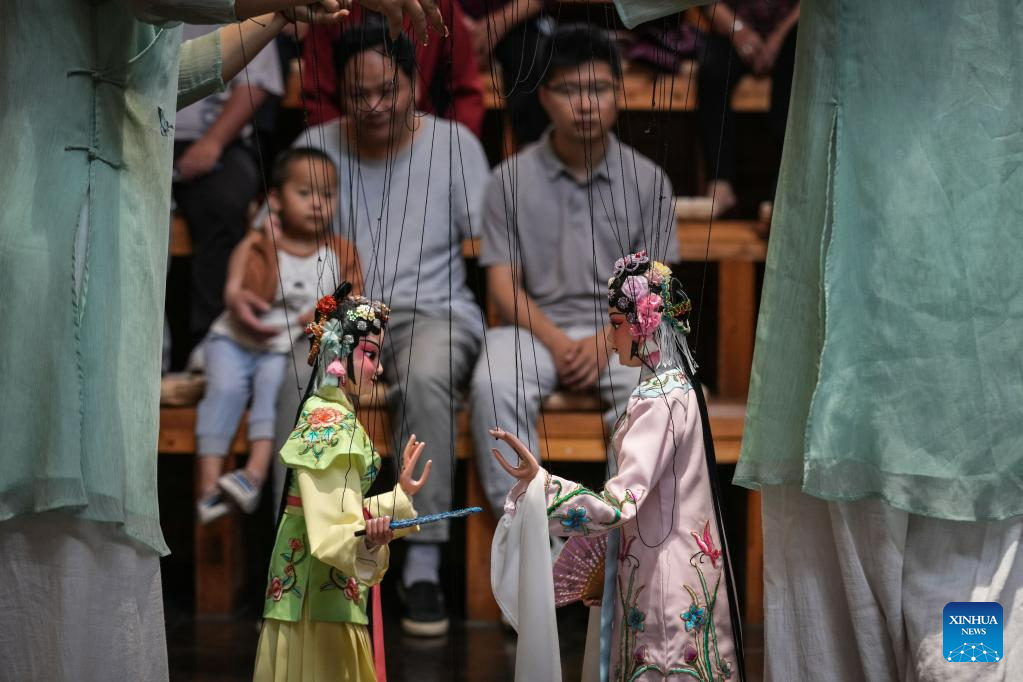
Sun Jing (L) and Shi Jinfang perform puppet play of Kunqu Opera in Qidu Town, Wujiang District of Suzhou City, east China's Jiangsu Province, May 17, 2023.
In Qidu Town of Suzhou, there is a unique form of Kunqu Opera called "Kunqu Puppet" which features actors presenting performance with puppets on the stage.
In order to inherit the traditional "Kunqu Puppet", Sun Jing, Shi Jinfang and Shi Xiaoming were selected by local authority to study Kunqu Opera performance in an opera school while they were still middle school students in 2004. At the opera school, they first learned the art of Kunqu Opera performance before moving on to puppet handling. After graduating in 2009, they began to perform "Kunqu Puppet" at the cultural station in Qidu Town and have performed over 280 puppet plays of Kunqu Opera for more than 70,000 spectators so far. (Xinhua/Yang Lei)
Making skill of horse bag was listed as an intangible cultural heritage of Tibet in 2018.
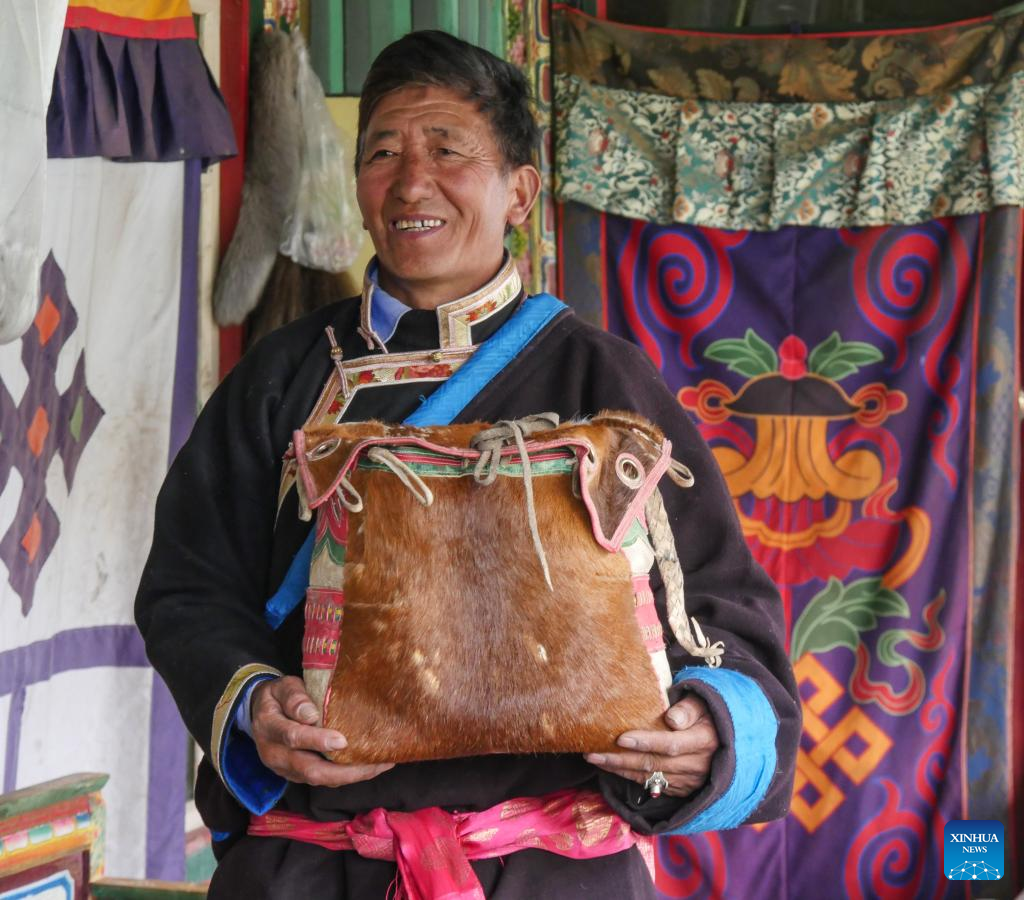
Sonam Qoipei displays a horse bag he made in Nang County of Nyingchi, southwest China's Tibet Autonomous Region, April 18, 2023.
At Sonam Qoipei's workshop of handmade horse bag, various types of horse bags are neatly placed on the cabinets.
The horse bag is made of cowhide, which is waterproof. Its making skill was listed as an intangible cultural heritage of Tibet in 2018.
The process of making horse bags involves dozens of steps, so the production is time-consuming and the output is low, which has hindered its development and inheritance. (Xinhua/Liu Zhoupeng)
Cantonese embroidery was listed as one of the national-level intangible cultural heritages in China in May of 2006.
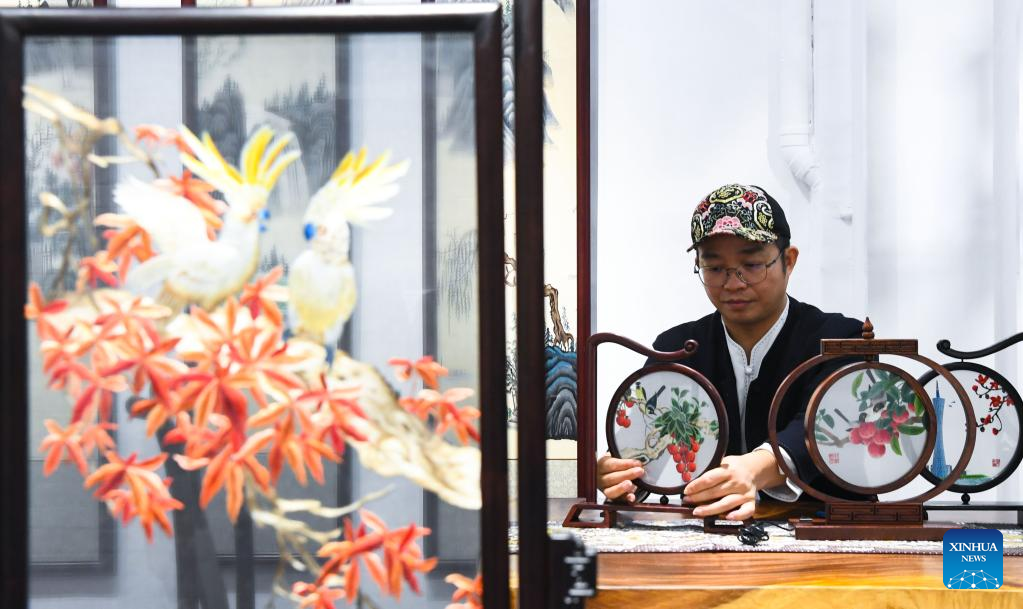
Wang Xinyuan arranges Guangzhou embroidery artworks at his studio in Liwan District of Guangzhou, south China's Guangdong Province, Dec. 6, 2022. Cantonese embroidery is one of the four famous embroideries in China. Guangzhou embroidery, part of Cantonese embroidery, dates back to the Tang Dynasty (618-907) and has a history of more than 1,000 years.
Boasting of over 30 kinds of stitches, Guangzhou embroidery is well known for complicated composition, vivid image, rich colour and lustre, and varied styles.
Over the years, Wang has tried to make his own way in the inheriting of the craft, creating artworks with distinguishing styles. In his embroideries, he has adopted methods which are usually used in photography, oil paintings and traditional Chinese paintings. Besides traditional themes such as flowers and birds, silk cotton and lichee, Wang has also created Guangzhou embroidery on bronze wares, famous paintings and portraits. (Xinhua/Deng Hua)
The craft of making Chengni inkstone was listed as one of China's national intangible cultural heritages in 2008.
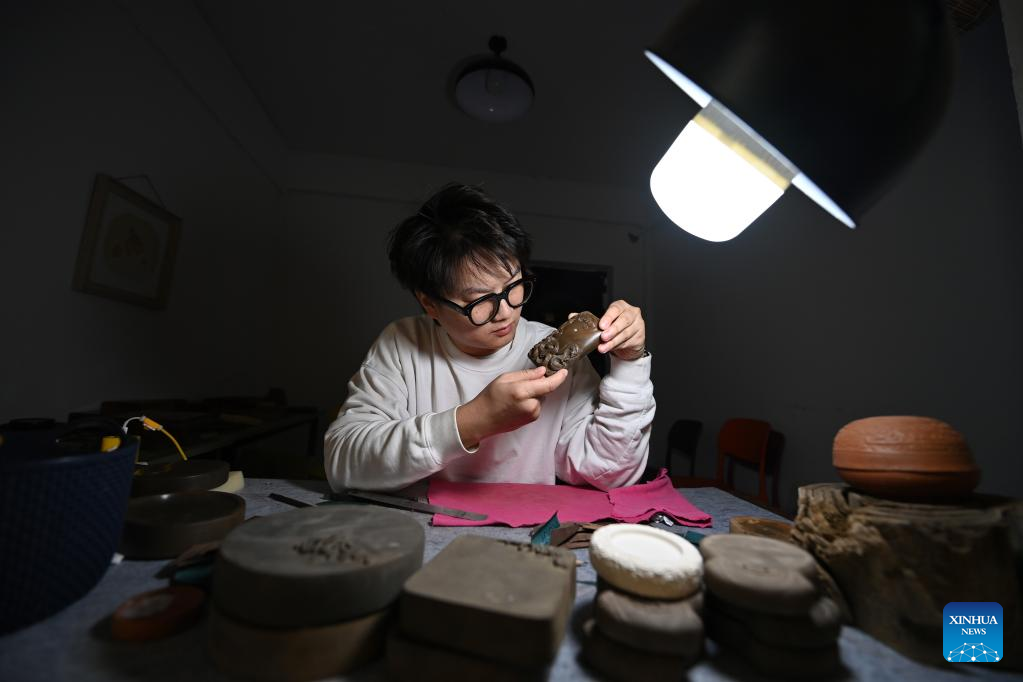
Lin Xiaolin checks the quality of a Chengni inkstone at a studio in Xinjiang County in Yuncheng, north China's Shanxi Province, Feb. 15, 2023.
Chengni inkstone, one of the "four famous inkstones" in China, is known for its fine texture which can reduce harm done to the brush.
Due to various reasons, the time-honored craft of making Chengni inkstone had once been lost and was later brought back by Lin Yongmao and his son Lin Tao in Xinjiang County.
It takes over a year and more than 10 steps to make a Chengni inkstone. In 2008, the craft of making Chengni inkstone was listed as one of China's national intangible cultural heritages. (Xinhua/Yang Chenguang)
Horse racing festival has been listed as a national intangible cultural heritage.
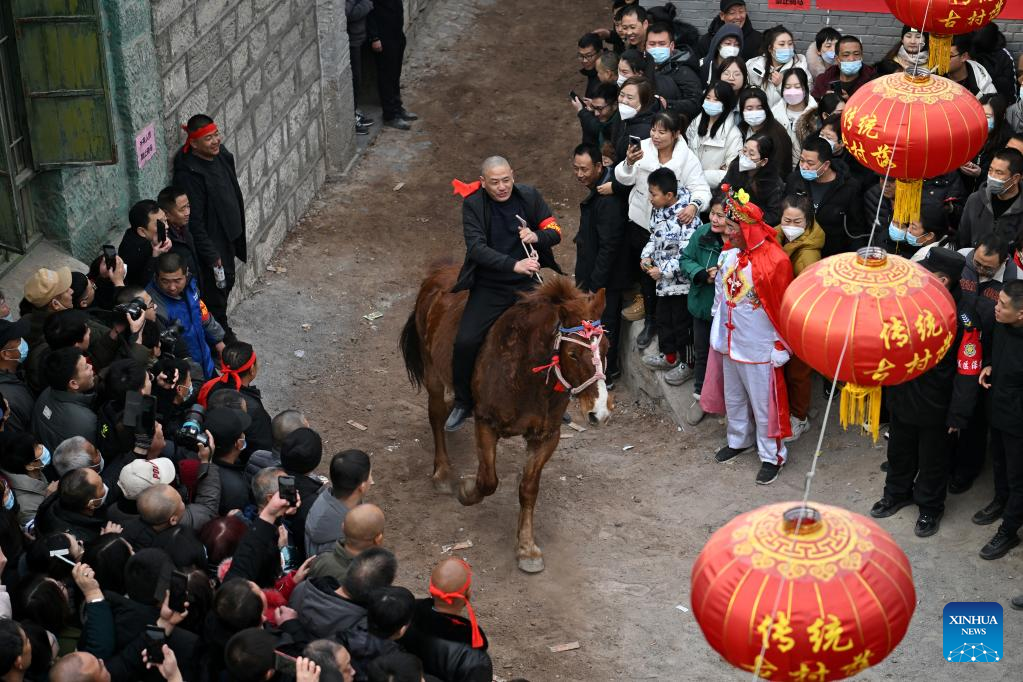
This photo taken on Feb. 6, 2023 shows a horse racing festival in Xiadongzhai Village, Pingding County of north China's Shanxi Province. The horse racing festival, held on the 16th day of the first month of the Chinese lunar calendar in the village, is a Spring Festival custom with a history of over 1,800 years. It has also been listed as a national intangible cultural heritage.(Xinhua/Zhan Yan)
The techniques of brewing Shaoxing rice wine was listed as a national intangible cultural heritage in 2006.
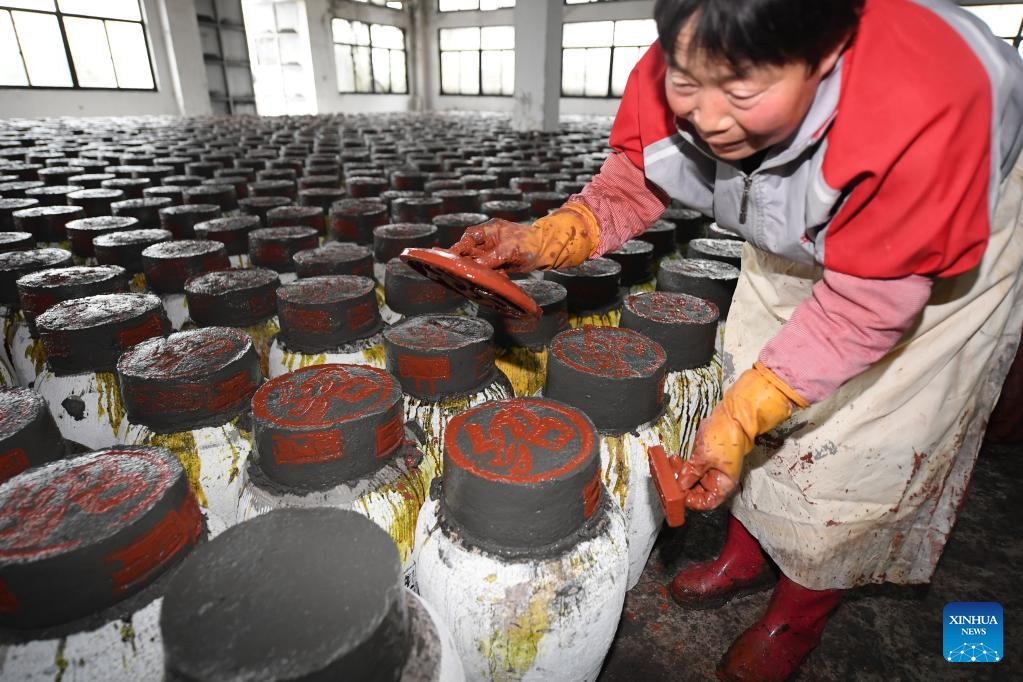
A worker seals wine crocks with mud at a rice wine brewery in Yuecheng District of Shaoxing, east China's Zhejiang Province, Feb. 7, 2023. Shaoxing is one of the largest production and sales bases of yellow rice wine in China. Shaoxing wine is still produced by locals nowadays with traditional method of brewing.
At present, there are more than 50 yellow rice wine production and operation enterprises in Shaoxing, with an industrial output value of about 5 billion yuan (about 737 million U.S. dollars) in 2022. (Xinhua/Weng Xinyang)
Zhanian making technique was listed as a national intangible cultural heritage in 2014.

A performer with a Zhanian instrument prepares to stage a show in Mangpu Township of Lnaze County, southwest China's Tibet Autonomous Region, Jan. 21, 2023.
Zhanian, a stringed instrument, is widely used in songs and dances in Tibet. In Tibetan language, Zhanian is the word for the melodious sound.
Zhanian making has a long history and the making technique was listed as a national intangible cultural heritage in 2014. (Xinhua/Jigme Dorje)
The making of Keemun black tea was listed as China's national-level intangible cultural heritage in 2008.

Wang Chang does the sieving processing of keemun black tea at a tea garden in Qimen County, east China's Anhui Province, Nov. 26, 2022. Keemun black tea, one of the most famous Chinese tea with intensive aroma, has a history of more than 100 years. The tea, also called "Qihong" in Chinese, plays an important role in cultural exchanges between the west and the east. In 2008, the making of Keemun black tea was listed as China's national-level intangible cultural heritage, and nowadays the tea has become a symbol for Anhui Province or even China.
The primary processing of Keemun black tea includes four steps, namely natural withering, rolling, fermenting and drying, lasting from before the Qingming festival (April) to June. After that, the refining of the tea is much more complicated, which mainly includes procedures such as screening, winnowing, compressing, re-drying, blending, piling and packing. Of all the refining steps, blending is the key, which decides the shape, scent, and color of the final tea product. (Xinhua/Zhang Duan)
The craft of making Yuezhou fan was listed in the fifth batch of national intangible cultural heritages in 2021.
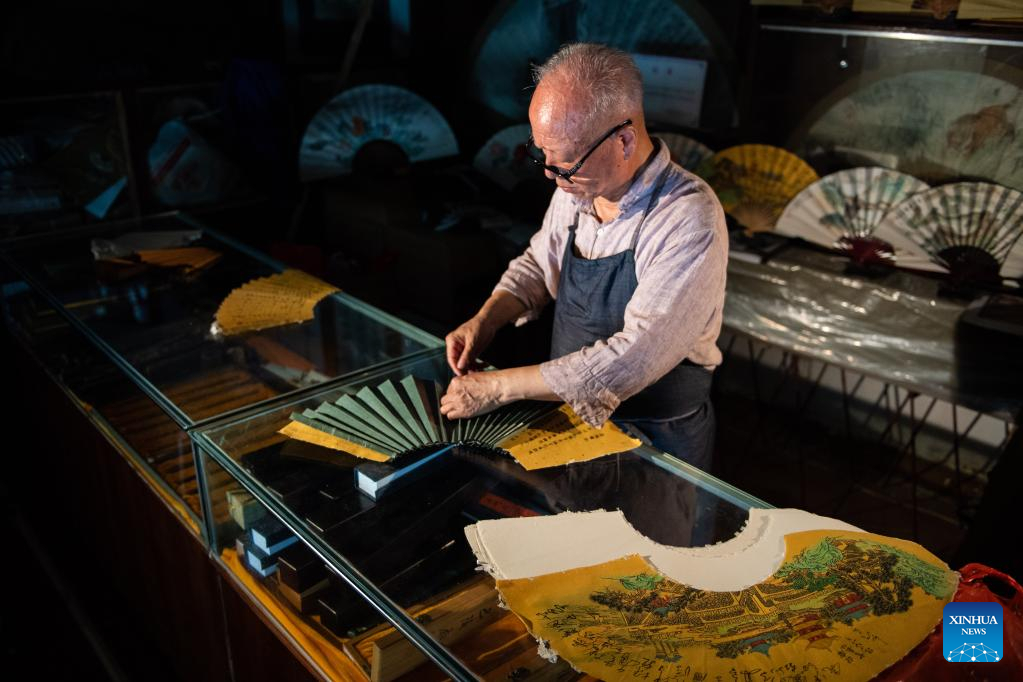
Liu Zhengwen makes Yuezhou fan at his "Baling fan studio" in Yueyang City, central China's Hunan Province, June 23, 2022.
Yuezhou fan dates back to the late Ming Dynasty (1368-1644) and early Qing Dynasty (1644-1911). The fan, having a history of about 400 years, is one of the most famous fans in China for its delicacy. Using fine bamboo as its framework, ox horn as the nail, and Xuan paper as the cover, the fan goes through 72 complicated procedures before done, while the making of framework requires most exquisite and skillful work.
Liu Zhengwen, 70 years old, a provincial intangible cultural heritage inheritor of Yuezhou fan, has been engaged in the craft for 56 years. Nowadays, Yuezhou fan craft faces the problem of inheriting, the same as other traditional crafts. Acknowledging the challenge, Liu cultivates his own son and daughter on the craft, with his son making the fans and daughter designing the patterns. (Xinhua/Chen Sihan)



